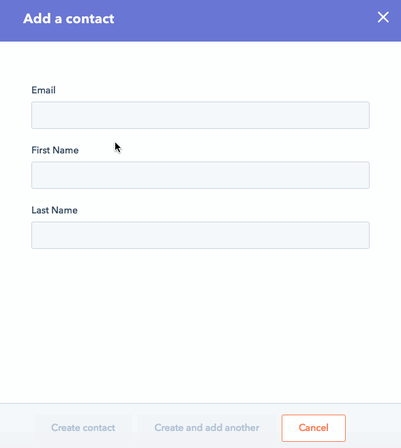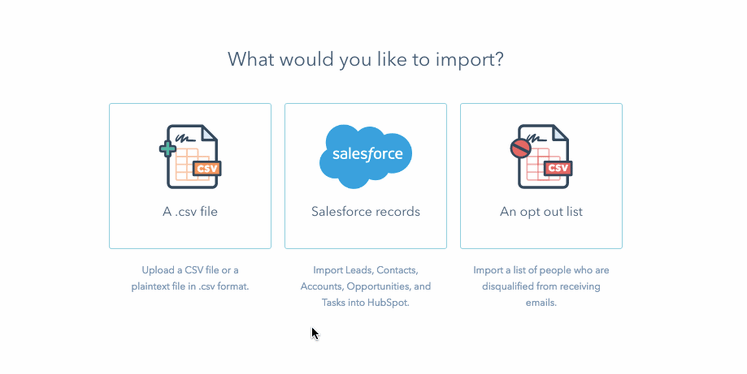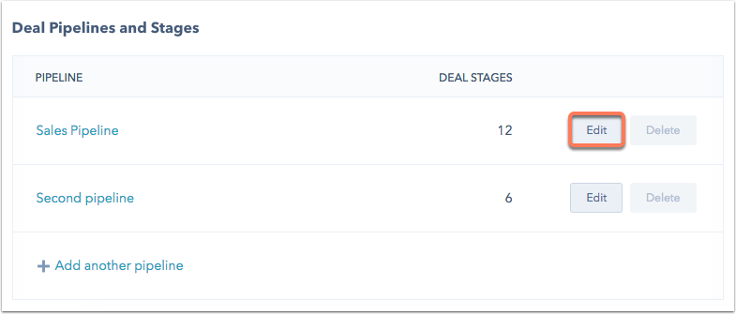The HubSpot CRM is a valuable tool that can help keep your teams organized and increase productivity, all while aligning your sales and marketing teams. But, with a powerful tool can come some complexity, and in order to get the most out of your CRM, it’s important to spend the time and follow best practices while building and maintaining it.
From poor database hygiene to an incomplete setup, here are some common HubSpot CRM mistakes to avoid.
Top 10 HubSpot CRM Mistakes to Avoid
Mistake #1: Failing to take advantage of training resources
 HubSpot provides a plethora of free training resources to its customers, which can help someone with zero CRM knowledge feel comfortable in the tool. From the HubSpot Sales Software training course in HubSpot Academy, to help articles and community forums, there are seemingly endless resources to help users feel comfortable and confident in the tool.
HubSpot provides a plethora of free training resources to its customers, which can help someone with zero CRM knowledge feel comfortable in the tool. From the HubSpot Sales Software training course in HubSpot Academy, to help articles and community forums, there are seemingly endless resources to help users feel comfortable and confident in the tool.
It’s important to take advantage of these resources so you don’t miss out on valuable features of your CRM and inadvertently create more work for yourself later on through improper setup and poor data hygiene.
Mistake #2: Selectively creating contact records
It’s important to create contact records for everyone you have interacted with at an organization. This means everyone.
 From the receptionist to the CEO, every person you’ve had a conversation with should have a contact record in your CRM. This will help create a clear picture of the organization, while also giving you the resources and context to reach the right people at the right time.
From the receptionist to the CEO, every person you’ve had a conversation with should have a contact record in your CRM. This will help create a clear picture of the organization, while also giving you the resources and context to reach the right people at the right time.
Mistake #3: Using contact records for companies and organizations
Contact records and company records are not synonymous. It’s important to create company records for organizations, and contact records for people at that organization.
Mistake #4: Failing to associate contact and company records with each other
Even though you are creating separate records for contacts and companies, it’s important to associate these records with one another.
HubSpot has the ability to automatically associate contact records with a company record, based on the email domain. However, if a contact record has been added with a free email provider (Gmail, Outlook), then the CRM user will have to go in and manually associate these records.
Mistake #5: Saving notes outside of the CRM
As you look at a particular contact record, the timeline should be a comprehensive view of every single interaction – online or offline.
Notes are a great way to capture information such as the result of an in-person meeting, or a recap of your last call. These will help keep all of your interactions in one central place, leaving out the guesswork when preparing for your next call or meeting.

Pro tip: @ mentioning team members in your notes can help align your team and foster open communication, ensuring that all of your team members are on the same page.
Mistake #6: Failing to add contacts from offline sources to the CRM
Your CRM should be the one centralized place to store all of your business contacts, no matter what the referral source. Met some promising prospects at a tradeshow? Great! Make sure you take some time post-event to add them to your CRM.
Rather than entering them manually, use HubSpot’s handy import wizard to import hundreds (or thousands) of records at once.

Mistake #7: Creating deals without associating with a contact or company
As a part of your deal creation routine, make sure that you always associate deals with contacts and companies. That way when you go back to move your deals through your sales stages on the deal board, you won’t have to spend time researching who that deal was associated with.
Remember, all of your interactions with a contact are stored on that contact record’s timeline, so you’ll want to use that information for context as you work with that person to progress the deal.

Mistake #8: Creating a deal without filling in the amount
As soon as you have an idea of how much a deal will be worth, make sure you add the amount. The amount not only helps to prioritize and filter deals, but also ensures that the revenue on your deals forecast is accurately depicted.
This value isn’t set in stone – it can change at any time throughout the sales process as you get a better idea of the products or services that will be purchased. Even just a rough estimate is better than nothing.
Mistake #9: Overcomplicating the sales process
When setting up your sales pipeline, make sure you have all of the actions necessary for closing a deal. But keep in mind, there’s a fine line between too many deal stages and too few.
Overcomplicating the pipeline by having too many deal stages can confuse your team and discourage them from using the software.

If you condense your sales process into too few deal stages, reps will have a harder time managing their follow-up activities because they won’t have as much clarity on where each deal stands.
The bottom line is, make sure you take some time to map out all of the steps in your pipeline, but only those that are true milestones in the sales process.
Mistake #10: Avoiding regular CRM cleanups
Even the most diligent of sales and marketing managers can fall victim to this mistake. A contact database can only remain current for so long. Companies merge and go out of business. People switch jobs and retire. Last names and phone numbers and job titles change all the time. Contacts that converted on your offers last year may not find your emails engaging or relevant anymore.
Because your CRM is the nervecenter for all of your marketing and sales efforts, it’s important to do regular cleanups and make sure all of your contact and company records are up-to-date.
Keeping old, stale, and inaccurate records will eventually cost you – both in terms of efficiency and in terms of money because the number of contacts will affect your HubSpot contact tier.
Set yourself up for success by setting aside time for CRM maintenance and cleansing at least once per year.
Need some guidance for cleaning up your CRM? How about some CRM training for your team? We can help with that! Contact us for a free consultation.
Share this
You May Also Like
These Related Stories

Top HubSpot Updates in 2022 with Kyle Jepson

How to Improve Lead Quality & Attract The Projects You Want


/Accreditations/CRM-Implementation-Accredited-Badges.png?width=170&height=138&name=CRM-Implementation-Accredited-Badges.png)
/Accreditations/Onboarding-Accredited-Badges.png?width=170&height=137&name=Onboarding-Accredited-Badges.png)
/Accreditations/Custom-Integration-Accredited-Badges.png?width=170&height=137&name=Custom-Integration-Accredited-Badges.png)

